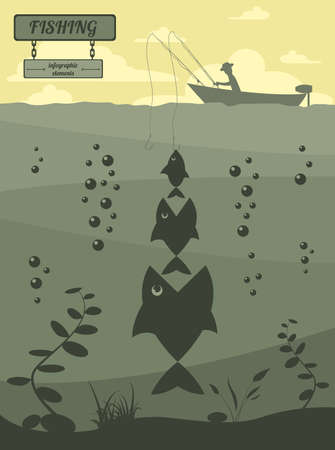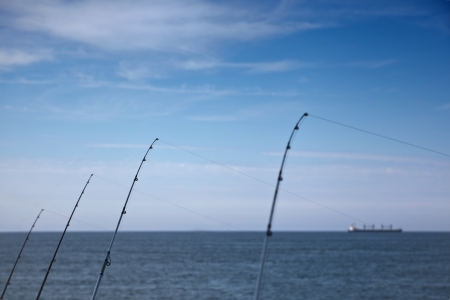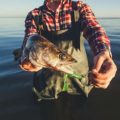Understanding Tides and Currents in the English Channel
The English Channel is renowned for its complex and powerful tidal systems, making it a unique environment for boat fishing. To fish successfully here, it’s crucial to grasp how tides and currents behave in this particular stretch of water. Unlike many other coastal areas, the Channel experiences some of the strongest tidal movements in the world, with tidal ranges regularly exceeding 6 metres during spring tides. These dramatic rises and falls are due to the funnel-like shape of the Channel, which amplifies tidal forces as water is squeezed between southern England and northern France.
There are two main types of tides to consider: spring tides and neap tides. Spring tides occur twice a month, around the time of the full moon and new moon, when the gravitational pull of the sun and moon combine. This results in higher high tides and lower low tides, creating faster and more forceful currents. Neap tides happen during the first and third quarters of the moon, producing less extreme tidal movements and gentler currents. These variations have a direct impact on fishing conditions, influencing everything from fish behaviour to boat handling. Understanding these local patterns not only keeps you safer on the water but also helps you target fish more effectively throughout the tide cycle.
2. How Tidal Movement Influences Fish Behaviour
Understanding how tidal movements affect fish behaviour is crucial for successful boat fishing in the English Channel. The Channel’s unique combination of strong tidal flows and varied seabed features means that local fish species react differently depending on the phase of the tide and the speed of the current. As tides rise and fall, water movement stirs up nutrients and baitfish, which in turn attracts larger predatory fish. This dynamic system creates specific feeding windows and hotspots, making timing your trip according to the tides essential.
How Different Fish Respond to Tides
Each species found in the English Channel has its own habits when it comes to tidal changes. For example, bass are known to hunt close to shorelines and estuaries during incoming tides, while cod might be more active during slack water when currents ease off. Plaice often feed on sandy patches exposed by outgoing tides. Understanding these preferences can help anglers position their boats more effectively.
| Fish Species | Tide Preference | Typical Feeding Location |
|---|---|---|
| Bass | Flood (incoming) tide | Shorelines, estuaries |
| Cod | Slack water | Deeper channels, wrecks |
| Plaice | Ebb (outgoing) tide | Sandy bottoms, banks |
The Role of Currents in Feeding Patterns
The strength of the current also plays a vital role in determining where fish gather. Stronger currents can dislodge crustaceans and small fish from their hiding places, providing easy meals for predators. However, not all fish favour fast-moving water; some will wait for slower flows before venturing out to feed. Knowing whether a spring or neap tide is running will allow you to anticipate both current speed and potential catch locations.
Maximising Your Chances: Practical Tips
To improve your chances, study local tide tables and plan your sessions around key feeding times—typically just after high or low water when currents start moving. Also, pay attention to wind direction; onshore winds can enhance tidal effects by pushing food towards certain marks. By aligning your fishing strategy with natural tidal cycles, you’ll significantly increase your success rate when boat fishing in the English Channel.

3. Choosing the Best Times and Spots for Boat Fishing
When it comes to boat fishing in the English Channel, timing your trip around tides and currents is absolutely essential. To maximise your catch, you’ll need to get comfortable reading tide tables—a skill every local angler masters early on. Tide tables, widely available from tackle shops and online sources like the UK Hydrographic Office, show you high and low water times for various ports. Look for periods of ‘slack water’—the brief window just after a tide turns but before the current picks up speed again. This is often when fish are most active and your bait presentation is at its best.
Interpreting Tide Tables Like a Local
Tide times can differ considerably along the Channel coast, so always use tables specific to your planned launch site. Check not only the time of high or low tide, but also the tidal range (the difference between high and low water). Large spring tides create strong currents that can stir up food and attract predatory fish, but they can also make anchoring tricky and drift fishing challenging. Smaller neap tides produce gentler flows, which are ideal if you’re targeting species like plaice or bass in shallower marks.
Understanding Slack Water
Slack water is a golden period—usually lasting 30-60 minutes—when tidal flow eases off before changing direction. In many English Channel hotspots, this is when shoals of cod or pollack feed most aggressively. For wreck or reef fishing, plan to arrive just before slack water so you’re in position as the bite turns on. It pays to keep an eye on wind forecasts too; wind-against-tide conditions can make things uncomfortable and less productive.
Identifying Productive Fishing Locations
The English Channel is rich with reefs, sandbanks, gullies, and offshore wrecks—all influenced by tidal movement. Productive spots are often where fast-moving currents funnel baitfish past structure, attracting larger predators. Look for marks listed on local charts or shared by experienced skippers. Pay attention to how the tide runs over these features: some marks only fish well on a flood or ebb tide, while others are best tackled at slack water. Don’t be afraid to move if you’re not seeing action—Channel fish tend to follow the food as it’s moved by the tide.
4. Safety Considerations for Channel Waters
Fishing in the English Channel demands careful attention to safety, as the waters can be unpredictable due to rapidly changing tides and strong currents. The combination of these natural forces means that even experienced anglers must remain vigilant at all times.
Monitoring Tidal Streams
The tidal streams in the Channel are notorious for their strength and variability. Knowing when and where the tide will turn is crucial for both productive fishing and safe navigation. British boat anglers typically consult local tide tables before every trip, ensuring they are aware of slack water periods and potential hazards like overfalls or race points.
| Tidal Stage | Potential Risks | Recommended Action |
|---|---|---|
| Flood Tide | Strong incoming currents, risk of drifting over marks | Anchor securely, monitor position frequently |
| Ebb Tide | Increased current speed, exposed sandbanks | Avoid shallow areas, plan route back to port accordingly |
| Slack Water | Sudden changes in direction, less predictable movement | Ideal for anchoring and bottom fishing, but stay alert for shift in tide |
Checking Weather Forecasts
The weather in the Channel can change quickly, with fog, wind shifts, or sudden squalls making conditions dangerous. Always check the latest Met Office marine forecast before heading out. Many British anglers also use VHF radio to receive real-time updates while on the water.
The Importance of Local Maritime Information
Local knowledge is invaluable for safe fishing in the English Channel. Harbourmasters and local tackle shops often have up-to-date information about sandbank movements, recent shipping activity, and any temporary hazards such as dredging operations. It’s good practice to inform someone ashore of your planned route and expected return time—this is standard in UK boating culture.
Essential Safety Practices for Boat Anglers
- Always wear a lifejacket: Even experienced swimmers should never underestimate fast-moving Channel waters.
- Carry a fully charged VHF radio: Essential for communication in emergencies.
- Maintain a proper lookout: Keep an eye out for commercial vessels and ferries which frequent the Channel lanes.
- Know your limits: If conditions deteriorate, it’s wise to head back early rather than take unnecessary risks.
- Use navigation aids: GPS and depth sounders help avoid underwater hazards and maintain course.
Summary Table: British Boat Fishing Safety Essentials
| Item/Practice | Description/Use | UK Standard? |
|---|---|---|
| Tide Tables & Almanacs | Dailly reference for tides and currents planning | Yes (RNLI recommended) |
| VHF Radio (Channel 16) | Main emergency contact frequency at sea in UK waters | Yes (mandatory for most boats) |
| Lifeboat Services (RNLI) | Lifeline service available around Channel coastlines; know local station numbers | Yes (free but donations encouraged) |
| Meteorological Updates (Met Office) | Meteorological forecasts specific to Channel areas; check before departure | Yes (widely used) |
Staying safe on the English Channel means respecting its power, using reliable information sources, and following established British maritime safety practices at all times.
5. Kit and Tactics Suited to Channel Conditions
Fishing in the English Channel means contending with fast-flowing tides and unpredictable currents, so your gear and tactics must be up to the task. Here’s how experienced UK anglers adapt their setups for optimal results.
Choosing the Right Rods and Reels
Robust rods between 12–20lb test are standard, offering enough backbone to hold bottom in strong flows yet sensitive for detecting bites. Multipliers or fixed spool reels with high line capacity (at least 300 yards of 20lb braid) are favoured for smooth drag and quick retrieval—essential when tides shift suddenly.
Mainline, Leaders, and Weights
Braided mainline is almost universal in the Channel: it cuts through tidal drag better than mono and transmits bites more directly. Pair this with a tough fluorocarbon leader (30–50lb) to handle abrasion from rocks or wrecks. For leads, grip weights (6–12oz) help anchor your bait in swift water, while breakaway leads are popular for sandy marks where snags are common.
Rigs Built for Movement
Paternoster rigs shine in the Channel, keeping baits slightly off bottom and less prone to snagging. Use shorter snoods (10–18 inches) to prevent tangles in turbulent water. Some local skippers recommend flowing traces for species like bass or pollack, as they allow natural bait presentation in the current.
Baiting Strategies That Work
Channel fish respond best to fresh, oily baits that release scent quickly—mackerel strips, squid, lugworm, and peeler crab are staples. When tides are running hard, use larger baits to ensure they stay put and attract attention despite the flow. For drifting over reefs or wrecks, combine bait with luminous beads or attractor spoons to boost visibility.
Expert Advice from UK Anglers
Local anglers advise always checking tide tables before heading out—plan your tackle according to whether you’ll be fishing slack water or peak flow. Don’t hesitate to switch lead sizes as the tide turns. Keep a variety of rigs pre-tied so you can adapt quickly; conditions change fast in the Channel and flexibility is key to staying productive.
Local Insights and Responsible Fishing
Understanding the unique dynamics of tides and currents in the English Channel is essential, but equally important is fishing responsibly and respecting local practices. Sustainable fishing not only preserves fish stocks for future generations, but also helps maintain the delicate marine ecosystem that defines this iconic waterway.
Promoting Sustainable Boat Fishing
British anglers take pride in sustainable fishing methods. Techniques such as catch and release, using appropriate tackle to minimise harm, and adhering to daily catch limits are widely encouraged. It’s vital to avoid overfishing certain species that may be vulnerable at particular times due to tidal movements or spawning seasons.
Region-Specific Regulations
The English Channel is governed by a mix of UK national legislation and local byelaws. Common rules include size and bag limits for species like bass, cod, and mackerel. In some areas, closed seasons protect breeding stocks—especially when strong tidal currents gather spawning fish in predictable locations. Always check with local authorities or angling clubs for up-to-date regulations before heading out.
Valued Local Etiquette
British boat anglers value courtesy on the water. Give fellow boats plenty of space, especially when drifting with the current or anchoring up on popular marks. Avoid crowding another vessel’s fishing ground—‘first come, first served’ is generally respected. Dispose of litter properly and never discard old tackle overboard; protecting the Channel’s environment is a shared responsibility.
By combining an understanding of how tides and currents impact fishing with a commitment to sustainability and respect for local customs, you’ll enjoy rewarding sessions in the English Channel—and help ensure its rich angling heritage continues for years to come.

